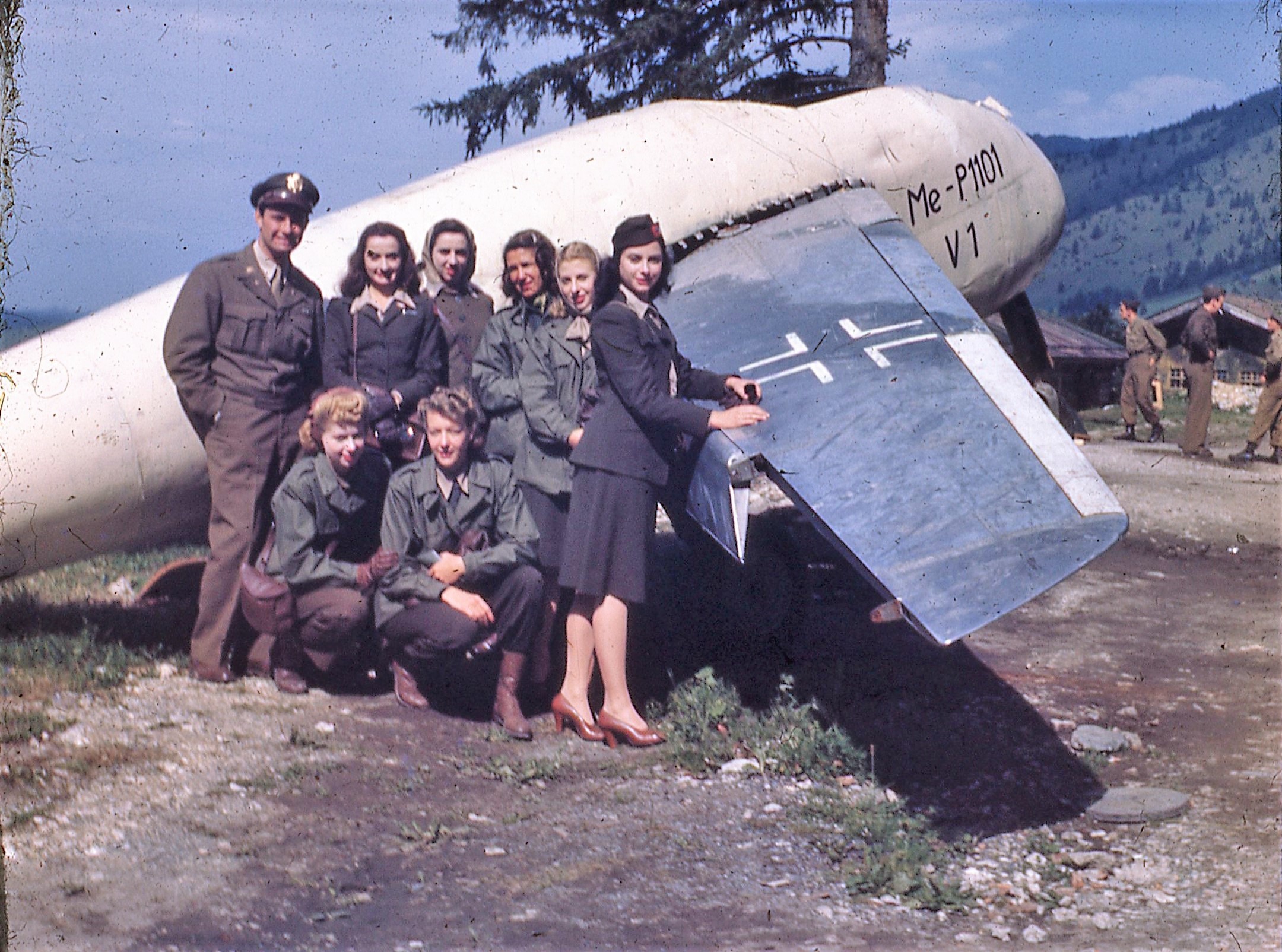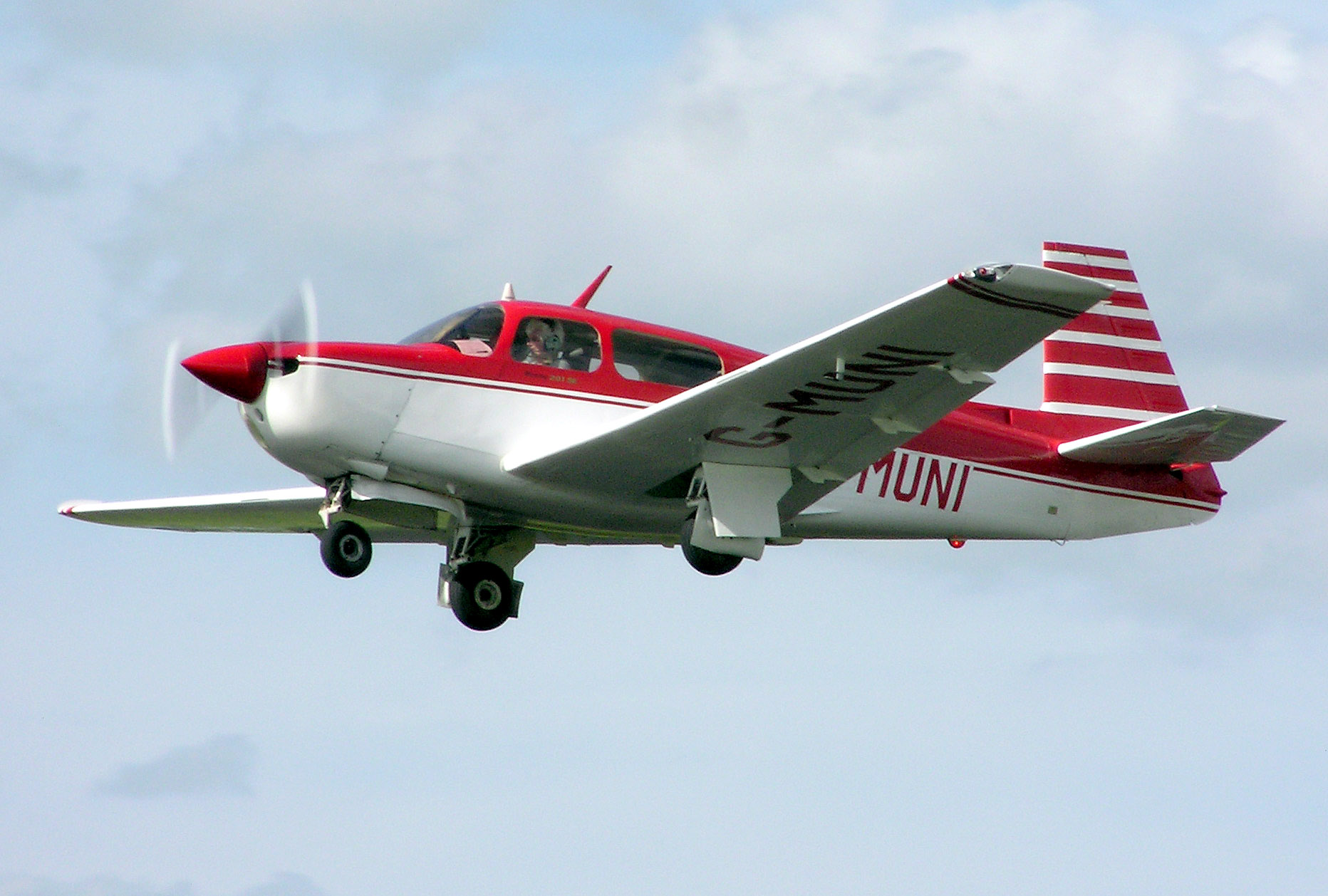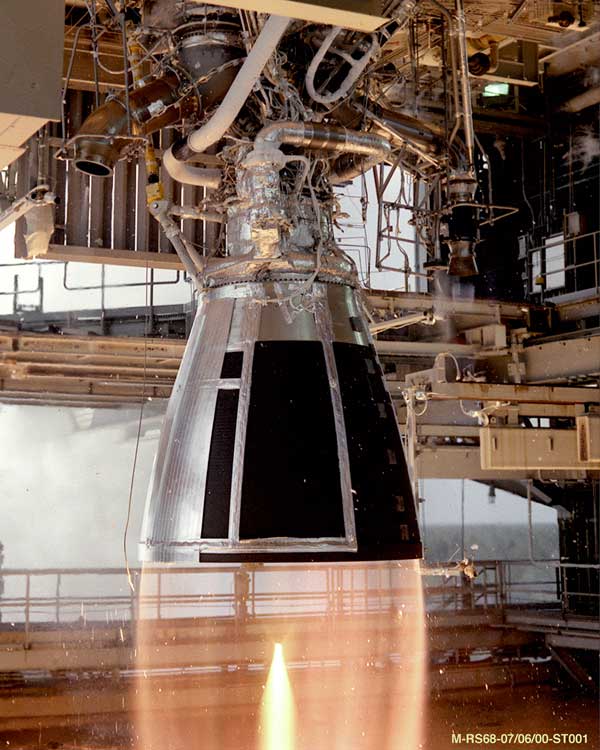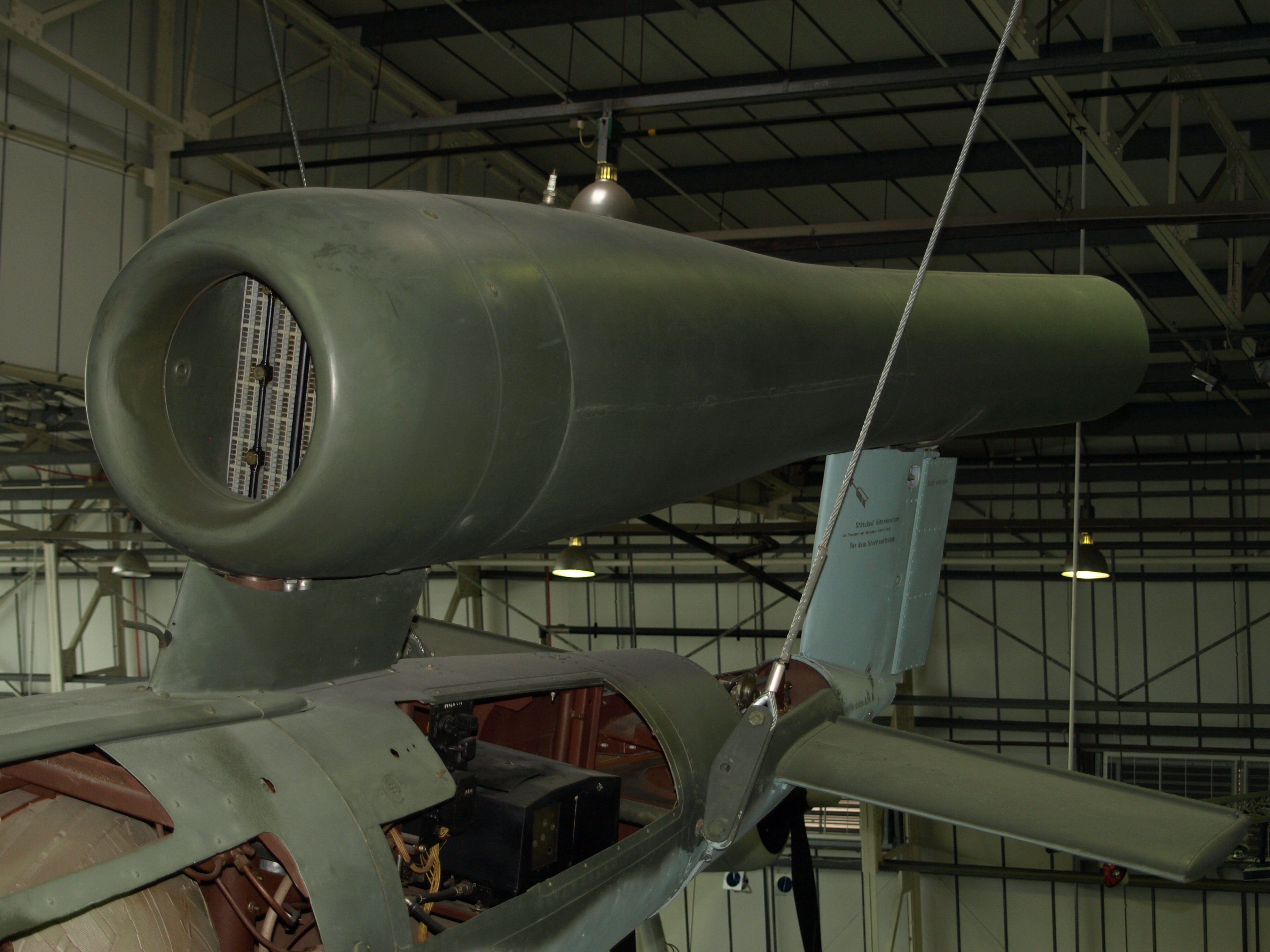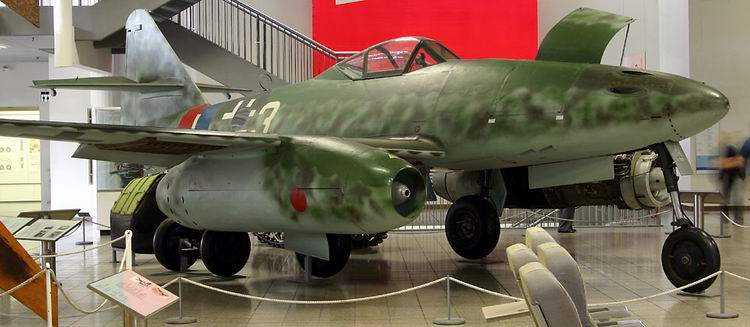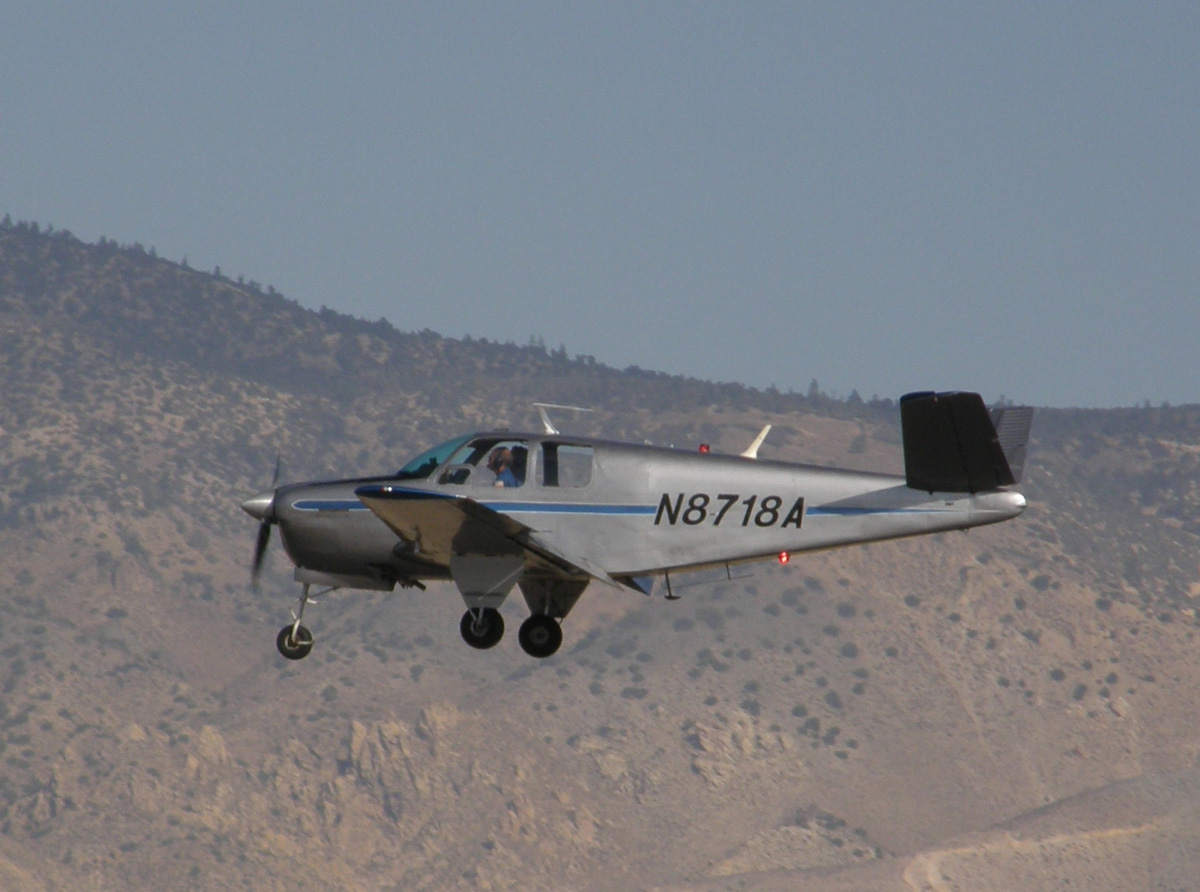|
Messerschmitt P.1101
The Messerschmitt P.1101 was a single-seat, single- jet fighter project of World War II, developed as part of the 15 July 1944 Emergency Fighter Program which sought a second generation of jet fighters for the Third Reich. A prominent feature of the P.1101 prototype was that the sweep angle of the wings could be changed before flight, a feature further developed in later variable-sweep aircraft such as the Bell X-5 and Grumman XF10F Jaguar. Design and development Within nine days of the 15 July 1944 issuance of design specifications for the Emergency Fighter, the Messerschmitt design bureau, under Dr. Woldemar Voigt, had formed a preliminary paper design for the P.1101. The aircraft which was developed initially had a short and wide fuselage, tricycle landing gear, and mid-mounted wings with an inner sweep of 40° near the fuselage, and a shallower 26° outboard. The single HeS 011 jet engine was to be mounted internally within the fuselage, being aspirated by two rounded ... [...More Info...] [...Related Items...] OR: [Wikipedia] [Google] [Baidu] |
WikiProject Aircraft
A WikiProject, or Wikiproject, is an affinity group for contributors with shared goals within the Wikimedia movement. WikiProjects are prevalent within the largest wiki, Wikipedia, and exist to varying degrees within Wikimedia project, sibling projects such as Wiktionary, Wikiquote, Wikidata, and Wikisource. They also exist in different languages, and translation of articles is a form of their collaboration. During the COVID-19 pandemic, CBS News noted the role of Wikipedia's WikiProject Medicine in maintaining the accuracy of articles related to the disease. Another WikiProject that has drawn attention is WikiProject Women Scientists, which was profiled by ''Smithsonian Magazine, Smithsonian'' for its efforts to improve coverage of women scientists which the profile noted had "helped increase the number of female scientists on Wikipedia from around 1,600 to over 5,000". On Wikipedia Some Wikipedia WikiProjects are substantial enough to engage in cooperative activities with outsi ... [...More Info...] [...Related Items...] OR: [Wikipedia] [Google] [Baidu] |
Tricycle Landing Gear
Tricycle gear is a type of aircraft undercarriage, or ''landing gear'', that is arranged in a tricycle fashion. The tricycle arrangement has one or more nose wheels in a single front undercarriage and two or more main wheels slightly aft of the center of gravity. Tricycle gear aircraft are the easiest for takeoff, landing and taxiing, and consequently the configuration is now the most widely used on aircraft.Crane, Dale: ''Dictionary of Aeronautical Terms, third edition'', page 524. Aviation Supplies & Academics, 1997. Aviation Publishers Co. Limited, ''From the Ground Up'', page 11 (27th revised edition) History Several early aircraft had primitive tricycle gear, notably very early Antoinette planes and the Curtiss Pushers of the pre-World War I Pioneer Era of aviation. Waldo Waterman's 1929 tailless '' Whatsit'' was one of the first to have a steerable nose wheel. In 1956, Cessna introduced sprung-steel tricycle landing gear on the Cessna 172. Their marketing depart ... [...More Info...] [...Related Items...] OR: [Wikipedia] [Google] [Baidu] |
Mach Number
The Mach number (M or Ma), often only Mach, (; ) is a dimensionless quantity in fluid dynamics representing the ratio of flow velocity past a boundary to the local speed of sound. It is named after the Austrian physicist and philosopher Ernst Mach. \mathrm = \frac, where: * is the local Mach number, * is the local flow velocity with respect to the boundaries (either internal, such as an object immersed in the flow, or external, like a channel), and * is the speed of sound in the medium, which in air varies with the square root of the thermodynamic temperature. By definition, at Mach1, the local flow velocity is equal to the speed of sound. At Mach0.65, is 65% of the speed of sound (subsonic), and, at Mach1.35, is 35% faster than the speed of sound (supersonic). The local speed of sound, and hence the Mach number, depends on the temperature of the surrounding gas. The Mach number is primarily used to determine the approximation with which a flow can be treated as an i ... [...More Info...] [...Related Items...] OR: [Wikipedia] [Google] [Baidu] |
Focke-Wulf Ta 183
The Focke-Wulf Ta 183 ''Huckebein'' was a design for a jet-powered fighter aircraft intended as the successor to the Messerschmitt Me 262 and other day fighters in Luftwaffe service during World War II. It had been developed only to the extent of wind tunnel models when the war ended, but the basic design was further developed postwar in Argentina as the FMA IAe 33 Pulqui II. The name ''Huckebein'' is a reference to a trouble-making raven (''Hans Huckebein der Unglücksrabe'') from an illustrated story in 1867 by Wilhelm Busch. Development In early 1944, the Reich Air Ministry (RLM, for ''Reichsluftfahrtministerium'') became aware of Allied jet developments, and were particularly concerned that they might have to face the Gloster Meteor over the continent. In response, they instituted the Emergency Fighter Program which took effect on July 3, 1944, ending production of most bomber and multi-role aircraft in favour of fighters, especially jet fighters. Additionally, they accele ... [...More Info...] [...Related Items...] OR: [Wikipedia] [Google] [Baidu] |
Ministry Of Aviation (Nazi Germany)
The Ministry of Aviation (, abbreviated RLM) was a government department during the period of Nazi Germany (1933–45). It is also the original name of the Detlev-Rohwedder-Haus building on the Wilhelmstrasse in central Berlin, Germany, which houses the modern German Finance Ministry (). The Ministry was in charge of development and production of all aircraft developed, designed, and built in Germany during the existence of the Third Reich, overseeing all matters concerning both military and civilian designs – it handled military aviation matters as its top priority, particularly for the Luftwaffe. As was characteristic of government departments in the Nazi era, the Ministry was personality-driven and formal procedures were often ignored in favour of the whims of the Minister, '' Reichsmarschall'' Hermann Göring. As a result, early successes in aircraft development progressed only slowly and erratically during World War II. History The Ministry was formed on 27 April 19 ... [...More Info...] [...Related Items...] OR: [Wikipedia] [Google] [Baidu] |
Rocket Engine
A rocket engine is a reaction engine, producing thrust in accordance with Newton's third law by ejecting reaction mass rearward, usually a high-speed Jet (fluid), jet of high-temperature gas produced by the combustion of rocket propellants stored inside the rocket. However, non-combusting forms such as cold gas thrusters and nuclear thermal rockets also exist. Rocket vehicles carry their own oxidiser, unlike most combustion engines, so rocket engines can be used in a vacuum, and they can achieve great speed, beyond escape velocity. Vehicles commonly propelled by rocket engines include missiles, Rocket-assisted projectile, artillery shells, ballistic missiles and rockets of any size, from tiny Rocket (firework), fireworks to Rocket (weapon), man-sized weapons to huge Space vehicle, spaceships. Compared to other types of jet engine, rocket engines are the lightest and have the highest thrust, but are the least propellant-efficient (they have the lowest specific impulse). The ideal ... [...More Info...] [...Related Items...] OR: [Wikipedia] [Google] [Baidu] |
Pulsejet
file:Pulse Jet Engine.PNG, 300px, Diagram of a valved pulsejet. 1 - Air enters through valve and is mixed with fuel. 2 - The mixture is ignited, expands, closes the valve and exits through the tailpipe, creating thrust.3 - Low pressure in the engine opens the valve and draws in air. A pulsejet engine (or pulse jet) is a type of jet engine in which combustion occurs in Pulse (physics), pulses. A pulsejet engine can be made with few or no moving parts, and is capable of running statically (that is, it does not need to have air forced into its inlet, typically by forward motion). The best known example is the Argus As 109-014 used to propel Nazi Germany's V-1 flying bomb. Pulsejet engines are a lightweight form of jet propulsion, but usually have a poor compression ratio, and hence give a low specific impulse. The two main types of pulsejet engines use resonant combustion and harness the combustion products to form a pulsating exhaust jet that intermittently produces thrust. T ... [...More Info...] [...Related Items...] OR: [Wikipedia] [Google] [Baidu] |
Messerschmitt Me 262
The Messerschmitt Me 262, nicknamed (German for "Swallow") in fighter versions, or ("Storm Bird") in fighter-bomber versions, is a fighter aircraft and fighter-bomber that was designed and produced by the German aircraft manufacturer Messerschmitt. It was the world's first operational jet-powered fighter aircraft and one of two jet fighter aircraft types to see air-to-air combat in World War Two, the other being the Heinkel He 162. The design of what would become the Me 262 started in April 1939, before World War II. It made its maiden flight on 18 April 1941 with a piston engine, and its first jet-powered flight on 18 July 1942. Progress was delayed by problems with engines, metallurgy Metallurgy is a domain of materials science and engineering that studies the physical and chemical behavior of metallic elements, their inter-metallic compounds, and their mixtures, which are known as alloys. Metallurgy encompasses both the ..., and interference from Luftwaffe chie ... [...More Info...] [...Related Items...] OR: [Wikipedia] [Google] [Baidu] |
Wing Configuration
The wing configuration or planform of a fixed-wing aircraft (including both glider (aircraft), gliders and powered aeroplanes) is its arrangement of lifting and related surfaces. Aircraft designs are often classified by their wing configuration. For example, the Supermarine Spitfire is a conventional low wing cantilever monoplane of straight elliptical planform with moderate aspect ratio and slight dihedral. Many variations have been tried. Sometimes the distinction between them is blurred, for example the wings of many modern combat aircraft may be described either as cropped compound deltas with (forwards or backwards) swept trailing edge, or as sharply tapered swept wings with large leading edge root extensions (or LERX). Some are therefore duplicated here under more than one heading. This is particularly so for variable geometry and combined (closed) wing types. Most of the configurations described here have flown (if only very briefly) on full-size aircraft. A few theoret ... [...More Info...] [...Related Items...] OR: [Wikipedia] [Google] [Baidu] |
Cockpit
A cockpit or flight deck is the area, on the front part of an aircraft, spacecraft, or submersible, from which a pilot controls the vehicle. The cockpit of an aircraft contains flight instruments on an instrument panel, and the controls that enable the pilot to fly the aircraft. In most airliners, a door separates the cockpit from the aircraft cabin. After the September 11, 2001 attacks, all major airlines fortified their cockpits against access by hijackers. Etymology The word cockpit seems to have been used as a nautical term in the 17th century, without reference to cock fighting. It referred to an area in the rear of a ship where the cockswain's station was located, the cockswain being the pilot of a smaller "boat" that could be dispatched from the ship to board another ship or to bring people ashore. The word "cockswain" in turn derives from the old English terms for "boat-servant" (''coque'' is the French word for "shell"; and ''swain'' was old English for boy ... [...More Info...] [...Related Items...] OR: [Wikipedia] [Google] [Baidu] |
Fuselage
The fuselage (; from the French language, French ''fuselé'' "spindle-shaped") is an aircraft's main body section. It holds Aircrew, crew, passengers, or cargo. In single-engine aircraft, it will usually contain an Aircraft engine, engine as well, although in some amphibious aircraft the single engine is mounted on a hardpoint, pylon attached to the fuselage, which in turn is used as a floating Hull (watercraft), hull. The fuselage also serves to position the Flight control surfaces, control and Stabilizer (aeronautics), stabilization surfaces in specific relationships to Wing, lifting surfaces, which is required for aircraft stability and maneuverability. Types of structures Truss structure This type of structure is still in use in many lightweight aircraft using welding, welded steel tube trusses. A box truss fuselage structure can also be built out of wood—often covered with plywood. Simple box structures may be rounded by the addition of supported lightweight strin ... [...More Info...] [...Related Items...] OR: [Wikipedia] [Google] [Baidu] |
V-tail
The V-tail or ''vee-tail'' (sometimes called a butterfly tail or Rudlicki's V-tailGudmundsson S. (2013). "General Aviation Aircraft Design: Applied Methods and Procedures" (Reprint). Butterworth-Heinemann. p. 489. , 9780123973290) of an aircraft is an unconventional arrangement of the tail control surfaces that replaces the traditional vertical and horizontal surfaces with two surfaces set in a V-shaped configuration. It is not widely used in aircraft design. The aft edge of each twin surface is a hinged control surface called a ruddervator, which combines the functions of both a Rudder#Aircraft rudders, rudder and Elevator (aeronautics), elevator. History The V-tail was invented in 1930 by Polish engineer Jerzy Rudlicki and was tested for the first time on a Hanriot HD.28 trainer, modified by Poland, Polish aerospace manufacturer Plage i Laśkiewicz, Plage and Laśkiewicz in the summer of 1931. Variants The X-shaped tail surfaces of the experimental Lockheed XFV were essential ... [...More Info...] [...Related Items...] OR: [Wikipedia] [Google] [Baidu] |
